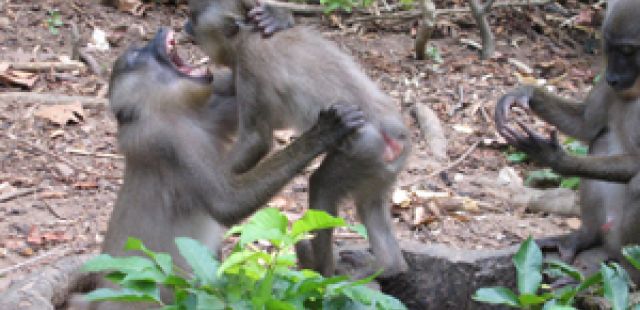The early Years; Juvenile play Groups
Mothers and daughters may remain together for a lifetime, or individuals may leave and join another group - no one really knows. It seems that age mates (other drills born at the same time/season - known as a 'cohort') may be very important. Drills give birth seasonally, which means that most babies are born in the same season - specifically, in the rainy season, when food is abundant. Infant drills are weaned from their mothers at the tender age of 3-6 months; during this weaning period, young drills begin to leave their mother and join large play groups, made up of all the juveniles in the group. Drill play groups are boisterous and fun to watch! But there is a serious undercurrent to them - play is meant to teach young animals the skills necessary to survive in the adult world. Hence, play fighting prepares a male for later in life, when the fighting is real. For drills, play also allows them to establish relationships with their peers that have a lasting effect.
Juvenile drills spend a lot of time playing. As they grow bigger, they begin to join in the more serious business of adult interactions. For females, this happens at 2-3 years of age (when they experience their first estrus cycle). Females have their first baby at around 3 years of age. For a male, maturity takes much longer - they are usually 7 to 10 years of age before they become adult (an adult male drill is more than twice the size of a female!). In the meantime, they continue to play and sometimes entertain themselves by causing mischief with the adults in the group.




























